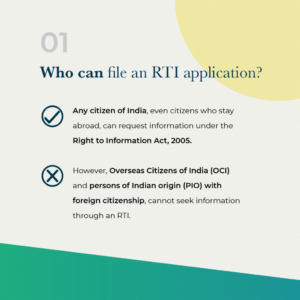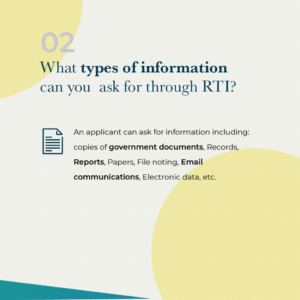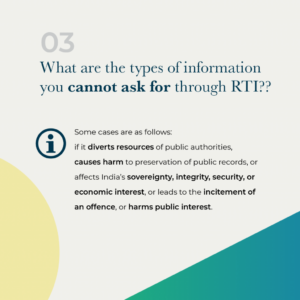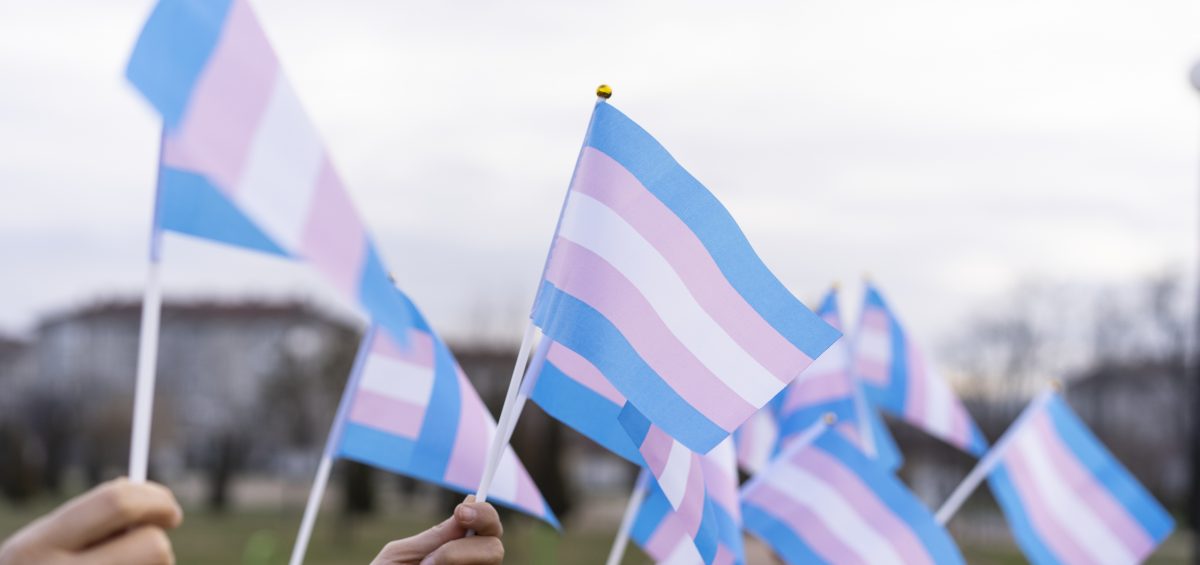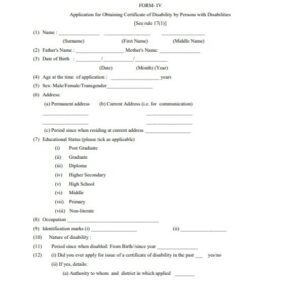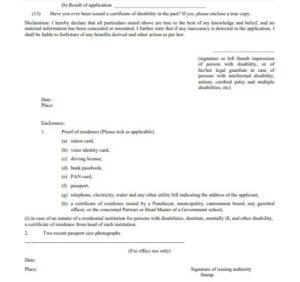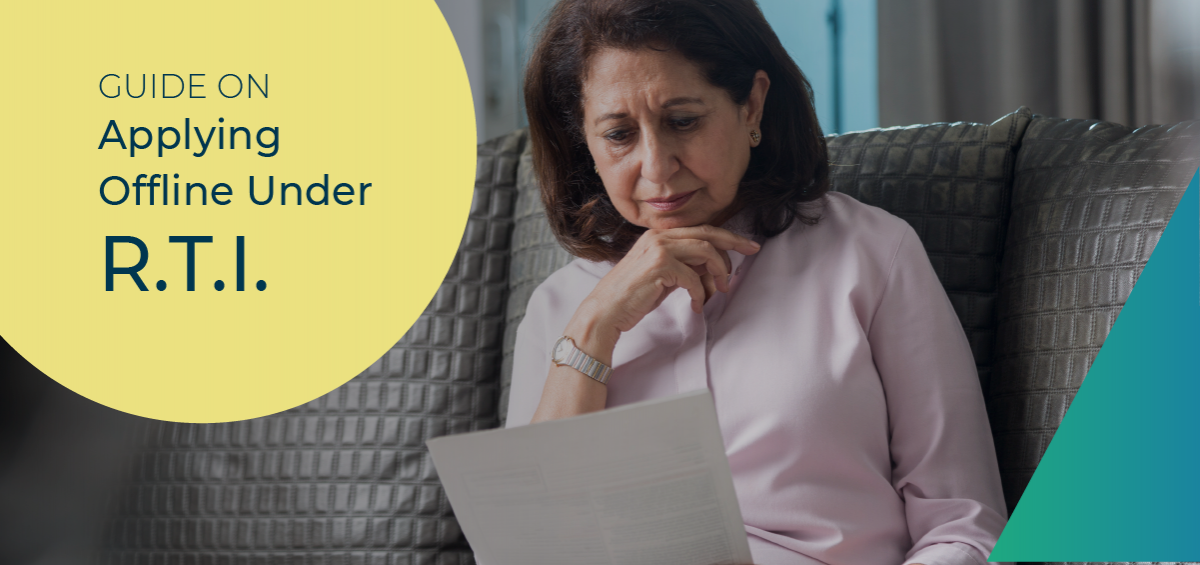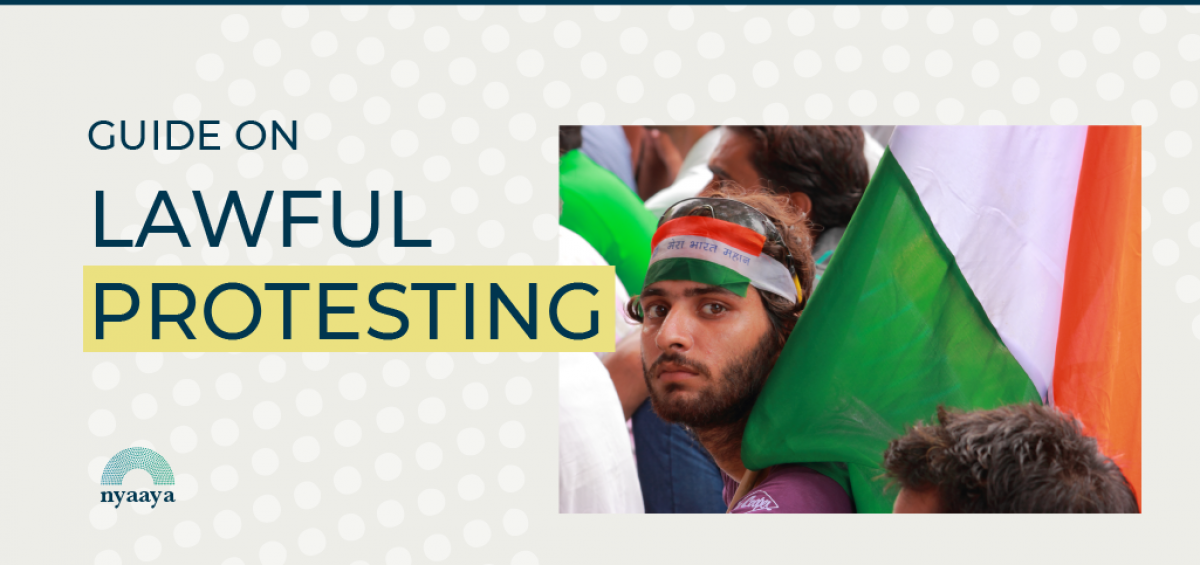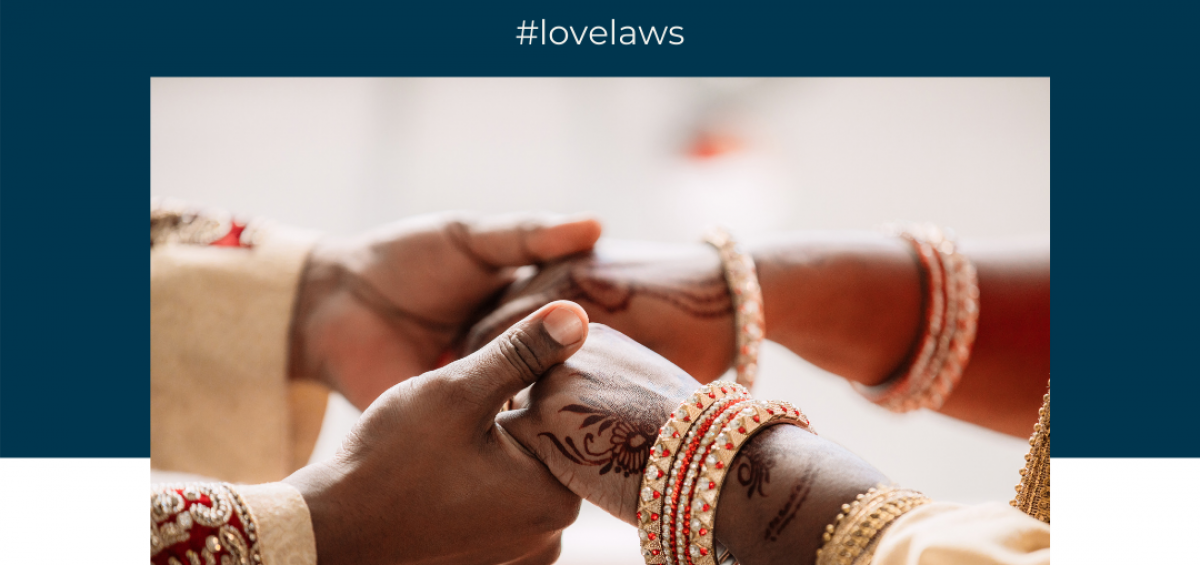How can the guide help you?
This guide by Nyaaya and Ungender helps those who have faced sexual harassment at the workplace to navigate the legal process in such situations. The guide clarifies legal aspects including what constitutes sexual harassment, remedies or safeguards available to the survivor, investigation procedure, punishments, etc.
The guide’s objective is to help survivors of sexual harassment secure a safe work environment and enable them to take action against sexual harassment by a colleague, visitor, or anyone else at a workplace.
What are the laws being discussed in the guide?
This guide discusses the Sexual Harassment of Women at Workplace (Prevention, Prohibition and Redressal) Act, 2013 (“POSH Act”), The Sexual Harassment of Women at Workplace (Prevention, Prohibition and Redressal) Rules, 2013 (“POSH Rules”) and the Indian Penal Code, 1860, (“IPC”) which criminalizes offences such as sexual harassment, stalking, and voyeurism and provides alternative criminal complaint mechanism.
What is sexual harassment at the workplace?
Sexual harassment at the workplace is any unwelcome sexual advance, request for sexual favours, or other kinds of unwelcome sexual behaviour which would make you feel offended, humiliated, or intimidated.
‘Sexual Harassment’ includes unwelcome sexual behavior (directly or by implication) such as:
Physical contact and advances
- Forceful or unwanted, unnecessary physical touch, physical assault, or molestation
- Forceful and repeated invitations for dates
- Forceful or unwanted kisses or hugs
- Unwanted, unwarranted touching of any body part
- Stopping or blocking movements within a workspace
- Sitting too closely and making you feel uncomfortable (if you move away the person moves closer to you again).
Sexual favours
- A demand or request for sexual favours
- Any favour or advantage granted in return for a sexual favour from you
Note: Sexual favors could mean requests for lewd conversations, interactions, engaging in perverse talks, entertaining similar conversations, and the actual physical act of indulging with a person sexually.
Sexually coloured remarks
- Derogatory comments about your body or dress, slurs, epithets, or sexually suggestive jokes
- Comments on your personal life with sexual undertones
- Subtle innuendos or open taunting about your physical appearance or body shape
- Sexual metaphors, obscene jokes, or jokes causing or likely to cause awkwardness or embarrassment.
Showing pornography or other sexually offensive or derogatory material
- Displaying sexually suggestive objects or pictures, cartoons, calendars, or posters
- Sending nude pictures or pornography
- Showing lewd images or jokes or offensive material to anyone in your presence
- Sharing lewd images or jokes or offensive material on company/team Whatsapp groups or on virtual meetings.
Any other unwelcome physical, verbal or non-verbal conduct of sexual nature.
- Making sexual gestures like leering, whistling, staring
- Gender-based insults and/or sexist remarks
- Eve-teasing
- Stalking, whether physically or on social media
- Repeated friend requests on your social media
- Calling you persistently at odd hours or beyond working hours
- Insisting on your video mode to be turned on at all times in virtual meetings, even when company rules do not require it
- Persistent questions about your personal life
- Calling you names such as ‘sweetie’, ‘darling’ or ‘honey’
- Making someone expose their private parts to you or repeatedly staring at your body parts
- Written communications of a sexual nature distributed in hard copy or via a computer network, suggestive or obscene letters, notes, or invitations
- Text messages or emails which are sexual in nature.
Quid Pro quo
Indirect or direct promises of benefits to an employee in return for sexual favours, also known as Quid Pro Quo. Quid pro quo (literal meaning “this for that”) is an exchange proposition that may reflect in one or more of the following situations:
- Hiring
- Payment of salary or compensation
- Promotion
- Retention decision
- Relocation or transfer
- Allocation of job, responsibility, or work
Indirect or direct threats to harm employment unless sexual favours/dates are granted, including:
- Loss of promotion
- Loss of employment
- Negative performance evaluation
- Undesirable work allocation
- Denial of equal opportunities
Hostile Work Environment
Sexual harassment at workplace is not limited to one single situation, experience or incident. The entire experience of a woman’s experience at work over a short/long period of time can be created as an environment which is hostile towards her as a specific person of a gender. This may reflect in the form of interference with work or creating an intimidating, offensive, or hostile work environment through:
- Lewd, unwanted acts including sexually coloured remarks, staring, forcible physical contact
- Displaying pornography
- Gender-based insults or sexist remarks
- Not including a person in projects or meetings on account of gender
- Refusing to acknowledge someone’s presence in meetings or work on account of gender
- Sexist comments during meetings.
Humiliating treatment likely to affect an employee’s health or safety, such as:
- Physical confinement or behaviour which violates privacy
- Creating a work environment where the situation forces a woman to be in an uncomfortable and inappropriate company of a male colleague or associate
- Making queries and gossip related to a woman’s private and personal life.
What is a ‘workplace’?
Sexual harassment has to occur at a ‘workplace’ and can happen inside your workplace, in the cafeteria, any common rooms, etc. This also includes an ‘extended workplace’, meaning any place that you visit for work or during your employment. For example, you can complain if you face sexual harassment in transportation provided by your employer for commuting to and from the place of work, external conference avenues, etc.
There are three categories of workplace that are important to understand:
- Primary workplace: These could be virtual, remote, or physical work spaces that everyone including you recognise as a place where you visit or are present for work;
- Extended workplace: These are the places which are visited by you, or where you are present for the requirement of your work. Example of extended workplaces are transportation to and fro from work and for work reasons, conferences, events, coffee houses, hotels, client sites, and more;
- Virtual workplace: All the platforms and modes of communication used for the purpose of delivering on your work duties. Examples of virtual workplaces are emails, phone calls, Whatsapp, Slack, video meetings, audio meetings, online forums, and more.
What kind of organisations or workplaces are covered under the law?
The POSH law applies to all workplaces in India – both the organized and unorganized sectors.
A common understanding easily confuses the requirement of this law with a minimum number of employees. It is important to acknowledge that the law is applicable for organizations mentioned below of any team strength, however, the requirement of having an Internal Committee kicks in with 10 or more members.
The law applies to organizations including:
- Government bodies or institutions
- Private and public sector organizations
- Non-Governmental organizations
- Organizations carrying out commercial, vocational, educational, entertainment, industrial, financial activities
- Hospitals and nursing homes
- Educational institutes
- Sports institutions and stadiums
- Dwelling places or houses.
| Working from home is considered an extension of the workplace and gets covered under the POSH law even if you are working from a remote location. Some kinds of inappropriate online behaviour can also be crimes under the Information Technology Act, 2000, also known as online abuse or online violence. Courts of India have clarified that virtual workplaces and homes are workplaces for the purposes of the POSH Act. Read more on the Ungender Blog. |
Who can complain against sexual harassment at the workplace?
Gender of the Complainant and Respondent
The law states that the complainant should be a woman. Also, the Transgender Persons (Protection of Rights) Act, 2019 clarified that any person associated with a workplace who identifies themself as a woman, is eligible to file a complaint under the POSH law.
A complaint can be filed against a person of any gender.
| Recently, the Calcutta High Court clarified that same-gender complaints are allowed under the POSH law. The Court held that people of the same gender could complain of sexual harassment against each other. Read more in the Nyaaya Daily and Ungender Blog. |
Association of the Complainant and Respondent
Female employees working at the organization or workplace, visiting the organization, and even interns have a right to complain against workplace sexual harassment. POSH complaints can be filed by:
- Domestic workers
- Regular employees
- Temporary employees
- Employees hired for a specific purpose
- Daily wage employees
- Contractual employees
- Employees on probation
- Employees from agencies
- Trainees and apprentices.
| All employees, regardless of whether they are working for a salary, on a voluntary basis or otherwise have a right to complain under the POSH law. Further, if any woman visiting an organisation gets harassed by any of the employees of such organisation, she can file a complaint with the Internal Committee of that organisation. |
Complaint Filing Process
How can you complain against sexual harassment?
Follow the steps given below to file a complaint to the Internal Committee (“IC”) or Local Committee(“LC”) :
- You can file a sexual harassment complaint in writing with the IC. You need to submit six copies of the complaint. However, most companies nowadays are also accepting complaints by email or a scanned copy of the written complaint sent on email.
- You cannot file an anonymous complaint. You have to disclose your name and relevant details to allow the respondent to provide a proper response. Read more at the Ungender Blog.
- Try to make the complaint concise, and write it in simple language which can be understood easily.
- The complaint must be submitted within three months from the date of the incident. If there are a series of incidents, it should be submitted within three months from the date of the last incident. If there is sufficient reason for a delay in filing the complaint, the IC or LC may extend the time for filing the complaint by an additional three months, after recording the reasons for the extension in writing.
- Submit the written complaint and any supporting documents along with the witnesses’ names and addresses to the IC or LC. You can add as many documents as possible in any format i.e., relevant emails, screenshots of SMSs/Whatsapp messages, call details, photographs, recordings, etc., to the complaint.
| The law also allows friends, relatives, co-workers, psychologists and psychiatrists, etc., to file the complaint on your behalf if you cannot make the complaint due to physical incapacity, mental incapacity, or even after your death. |
Do take reference from the sample forms section for the format of the complaint. While you may be aggrieved and in a lot of emotional trauma at the time of filing the complaint, it is crucial that you provide the following details as specifically as possible:
- Name of the Respondent, their place of work, and designation.
- Details of the incident/s (as explanatory as possible). No detail is irrelevant.
- Dates of each and every incident mentioned.
- Place where the incident/s happened.
- Relief that you want from the employer, including transferring the accused, compensation, etc.
While the above are a must for the IC to accept a proper complaint, you can also support the complaint with the following details:
- Members who were present at the time of the incident/s happening.
- Any person to whom you have mentioned the incident in the past.
- Screenshots, images, audios, videos, phone records, or anything that will provide support to your complaint.
- Any information even remotely related to the complaint information, like the working relationship between the survivor and accused, if any (whether subordinate, colleague, or superior).
What temporary relief measures can the survivor get during a pending inquiry?
During a pending inquiry, the survivor can make a written request to the IC or LC to recommend the following measures to the employer:
- Transfer of the survivor or accused to any other workplace.
- Granting leave to the survivor up to three months in addition to her regular leave entitlement.
- Any other relief requested.
- Restraining the accused from reporting on the work performance of the survivor or writing her confidential report.
Authorities and Complaint Forums
Who should you complain to against sexual harassment at the workplace?
Every employer must set up an ‘Internal Committee’ (“IC”) to hear and redress complaints relating to sexual harassment, at each office or branch of the organization having ten or more employees. An employer will be fined if the IC is not set up at such workplaces.
What is the role of the Internal Committee?
The IC looks into complaints of sexual harassment in the workplace, and decides on complaints after analysing the facts and evidence. An IC has the same powers as a civil court, including the power to:
- Summon or call individuals and ensure their attendance
- Question those involved in the complaint under oath
- Ask for production of documents.
Who are the members of the Internal Committee?
An IC must have:
- A senior-level female employee as a Presiding Officer.
- Two members from amongst the employees, preferably committed to women-centric causes or having experience in social work or legal knowledge.
- An external member from an NGO or association working for women, or someone familiar with sexual harassment issues.
At least half of the IC members must be women. The members can remain on the IC for up to 3 years. For every inquiry into a complaint, a minimum of 3 members of the IC, including the Presiding Officer, have to be present.
What is a Local Committee?
Every district has a Local Committee (LC) which receives complaints of sexual harassment:
- From establishments which do not have an IC due to having less than ten workers; or
- If the complaint is against the employer themself.
The members of an LC include:
- A female Chairperson from the field of social work or working for women.
- A woman representative working in the block, taluka, tehsil, ward or municipality in the district.
- Two members from an NGO or association for women’s rights, or familiar with sexual harassment issues (out of which at least one must be a woman).
- The concerned officer dealing with social welfare or women and child development in the district.
At least one LC member should be a woman belonging to the Scheduled Castes, Scheduled Tribes, Other Backward Classes or a minority community, and at least one member should preferably have a background in law.
The LC also has the same powers as a civil court and their powers are similar to the IC.
What are the mechanisms for organizations without an IC?
- If the organization has 10 or more employees, and has still not constituted an IC, write a letter to the employer/head of the organization educating them about the same (a format is given below).
- If the organization refuses to do so, send a copy of the same to the District Officer informing them of the status (a format is given below).
- Alternatively, you may also submit your complaint on the SHe-box portal and the portal will reach out to your employer on the same.
- Reach out to the LC for filing a complaint with them. Technically, you should just contact your employer and it is their duty to find the LC for you (if they have less than 10 members).
|
What are the alternative complaint options?
Apart from the IC in your workplace, you can file a sexual harassment complaint with any of the following authorities:
Police
Sexual harassment violates not only the POSH law but also the Indian Penal Code, 1860 (IPC), which criminalizes offences such as outraging a woman’s modesty, sexual harassment by a man, assaulting a woman with the intention to disrobe, voyeurism, stalking, and insulting the modesty of a woman. Read more in the Nyaaya explainer on Sexual Crimes.
National Commission for Women and State Commissions for Women
Complaints can be filed online, via post, and in person with the National or State Commissions for Women. Go to the resources section below to read more.
“SHe-Box” by Ministry of Women and Child Development (WCD)
“SHe-Box” is an online complaint platform by the Indian Ministry of Women and Child Development (“WCD”). SHe-Box allows female employees or visitors to raise complaints of sexual harassment at the workplace. It is a platform available for both the private sector and public sector. It aims at providing speedy redressal of sexual harassment complaints.
If a formal complaint is lodged with SHe-Box, based on an assessment of the complaint, the WCD will direct the complaint to the employee’s IC or the LC. The WCD also monitors the progress of inquiry conducted by the IC/LC and keeps the complainant updated. Any information given on this platform is kept confidential.
| Note: You can file parallel complaints with the SHe-box, Women’s Commission, IC, and Police. Please remember that once you reach out to the Women’s Commission or SHe-box, they will focus on ensuring that the IC/LC starts an official investigation, whereas police procedure is a parallel process and is not mutually exclusive. |
Redressal Process
How does the Internal Committee look into the complaint?
The IC or LC must complete their inquiry into every complaint of sexual harassment within ninety days from the submission of the complaint. After completing an investigation, they must prepare a report of findings. If sexual harassment is proved, the IC may recommend that the employer take action against the accused.
What are your rights as the Internal Committee investigates your complaint?
- Right to Information: The IC must educate you on the investigation procedure details with timelines, responsibility of all parties to maintain confidentiality, methodology, etc. at all stages of the investigation, be it when you file the complaint or any time during the investigation when you want clarity.
- Right to Confidentiality: The IC is bound to ensure that all the information that you are sharing with them as part of the complaint and during the course of investigation is kept confidential to the purpose of investigation. Only the IC members, Respondent, witness/es and authorities who need to know certain information will be made privy to it. Additionally, the IC also needs to take necessary measures to maintain confidentiality. This may include getting all parties, including you, to sign non-disclosure undertakings and more.
- Right to Transparency: The IC, as part of the investigation process, must share all information with you as well as the Respondent in order to provide both parties an equal opportunity to defend their complaint/rebuttal.
- Right to Fairness: The IC is bound to ensure that both you and Respondent are provided a fair and just treatment from the beginning till conclusion of the investigation with absence of any form of bias and judgment. These are called ‘principles of natural justice’. Read more at the Ungender Blog.
- Right to Conciliation: As a part of your right to be fully informed of the investigation procedure, the IC has to inform you of the right to conciliate matters between you and the Respondent. However, money cannot be a part of such conciliation.
- Right to a Non-Retaliatory Environment: The IC is bound to ensure that all necessary measures are undertaken to redress any retaliation/victimisation that you might have to face because of your complaint.
- Right to File a Police Complaint: At any given point in time, if you wish to file a police complaint, the IC will need to extend all necessary support to you.
- Right to Interim Relief: During an on-going investigation, which starts at the time and day of you filing a complaint, the IC can and should educate you on the possible options you have as interim relief and extend the same to you.
What is the timeline for addressing the complaint?
Given below is the timeline for addressing complaints:
- When the IC or LC receives the complaint, it should send one copy of the complaint to the accused within seven working days.
- The accused should reply to the complaint along with a list of supporting documents and names and addresses of witnesses within ten working days.
- The IC’s or LC’s inquiry must be completed within ninety days of receiving the complaint.
- The IC or LC must make the inquiry report within ten days of completing the inquiry.
- The employer must act on the IC’s or LC’s recommendations within sixty days of getting the inquiry report.
- Anyone not satisfied with the IC’s or LC’s decision can appeal against them within ninety days.
Can the case be settled or conciliated?
Yes, conciliation or settlement of the case can happen in IC or LC complaints made at workplaces. Conciliation is an informal method of resolving complaints before the complaint escalates into a formal inquiry.
Appeal Process
An appeal against the decision of the IC can be filed under following circumstances:
- In case you are aggrieved with the decision of the IC; or
- Aggrieved with non-implementation of the decision given by IC; or
- Punished for filing a false/malicious complaint; or
- If there has been a breach of confidentiality.
An appeal has to be filed with the ‘appellate authority’ under service rules. For example, many public sector organisations and government entities under their rules have an appellate body. If no such service rules exist, then an appeal has to be filed to the office notified by the State government. For instance, in the NCT of Delhi and Maharashtra, the Industrial Courts have been identified as appellate authority. Depending upon which State you are in, the appellate authority will be required to be identified.
This appeal has to be filed within ninety days of the decision of the IC. You can engage a lawyer for such appeals.
Types of Reliefs and Punishments
What are the punishments for committing sexual harassment at the workplace?
A person guilty of workplace sexual harassment can be punished as per the service rules of the organization, and other disciplinary actions (if there are no service rules), including:
- Written apology to the survivor
- Warnings, reprimands, censure
- Withholding of promotion
- Withholding of pay rise or increments
- Termination from service
- Undergoing a counseling session
- Carrying out community service
- Deduction of compensation payable to the survivor from the wages of the accused
- Compensation to the survivor.
The proportionality of the consequences and punishment decided for each allegation/set of allegations vary on various factors. IC’s are required to consider aspects pertaining to the authority/seniority of the perpetrator, duration, frequency, degree of offence, category, and ONLY at the end of an independent investigation decision, may also incorporate if there are any prior warnings given to the perpetrator.
How is the compensation amount decided?
The compensation payable by the accused is decided by the IC or LC based on:
- The mental trauma, pain, suffering, and emotional distress caused to the survivor
- The loss in career opportunity due to the incident of sexual harassment
- Medical expenses incurred by the survivor for physical/ psychiatric treatment
- The income and financial status of the accused
- Whether the accused can pay the compensation in a lump sum or installments.
Resources
Contact Information
- SHe-Box Application http://www.shebox.nic.in/
- National/State Commission of Women Complaint Mechanisms:
- Call 1091: Call 1091 and describe the crime in detail. Give your address and contact number. A police unit will then be sent to the address given to assist the survivor with the steps that need to be taken.
- Online: The National Commission for Women has an online complaint system known as Complaints Registration and Monitoring System where a survivor can fill in details and file a formal complaint. The following information has to be given:
- Details of the complainant (the person who is filing the complaint),
- Details of the survivor (woman who has faced the violence),
- Details of the accused and
- Details such as:
- Particulars of the Incident
- Date and Time
- Place of incident
- Email: You can file a complaint with National Commission for Women by sending an email to complaintcell-ncw@nic.in with any details regarding the sexual assault, such as the description of the person who allegedly commited sexual violence, or the description of the incident.
- Post/ Letter/ Messenger: You can write a letter to the National Commission for Women, to this address: National Commission for Women, Plot-21, Jasola Institutional Area, New Delhi- 110025
Checklists
- Draft a written complaint.
- Clearly mention the details of the incident(s) along with the circumstances preceding and following the incident.
- Mention details of the accused including name, designation, reporting structure between complainant and accused if any (whether subordinate, colleague or superior).
- Make six copies of the complaint.
- Submit any supporting documents with the complaint.
- Submit the names and addresses of any witnesses who are supporting your complaint.
- Mention relief sought by you.
- Submit your complaint to the IC within three months of the sexual harassment. If there is a delay, the IC may hear your case after giving written reasons.
- Submit requests for any interim measures required while the IC is investigating the complaint.
| Note: It is a prevalent reaction by a woman to delete obscene messages and details from their phone, mailboxes, or message windows. A common mistake in hindsight when a woman decides to file a complaint is that it becomes difficult for her to procure evidence/s that will substantiate the content of her complaint. Even if you do not possess certain evidence/s, but you believe they can be procured by someone in authority, or because of their knowledge, please inform the IC at the time of filing your complaint. It is then their responsibility to ensure that that evidence is retrieved.
Women generally worry about the lack or absence of evidence/s and witness/es, and thereby refrain from filing a complaint. Lack of evidence/s and witness/es does not mean that your complaint is false or without any merit. Please do not be concerned too much about this. As long as incidents alleged by you happened, be truthful and detail everything to the IC. |
Sample Forms
Source of Information
Legislation:
- Sexual Harassment of Women at Workplace (Prevention, Prohibition and Redressal) Act, 2013.
- Sexual Harassment of Women at Workplace (Prevention, Prohibition and Redressal) Rules, 2013.
- Indian Penal Code, 1860.
- The Criminal Law (Amendment) Act, 2013.
Resources:
Handbooks:
Glossary Terms
- Conciliation: A mutual agreement between parties to settle a problem between themselves peacefully.
- Interim measure: Actions taken during the pendency of an enquiry (90 days period) by the IC to provide some relief to the aggrieved.
- Ex-parte decision: Decision taken in the absence of one party.
- Witness: Any individual who was present at the time of a specific incident occurring or was privy to the happening of the said incident.
- Cross-examination: A process of questioning the statement, facts, and narrative by an individual with challenging enquiry
- Confidentiality: A mandated protection under the law provided for all individuals involved in a specific case investigation for their identity, content of a case/allegations, and output of the investigation.
- Inquiry report: A final document summarizing all details pertaining to a specific complaint with observations, minutes of meetings, conclusions, findings, and recommendation.
- Aggrieved: A person, cis-woman, or a person who identifies as a woman, who has experienced a sexual misconduct in a workplace.
- Complainant: A person, cis-woman, or a person who identifies as a woman, who has experienced a sexual misconduct in a workplace and filed an official complaint with the IC.
- Respondent: A person, irrespective of their gender, against whom a complaint of sexual misconduct has been filed.

